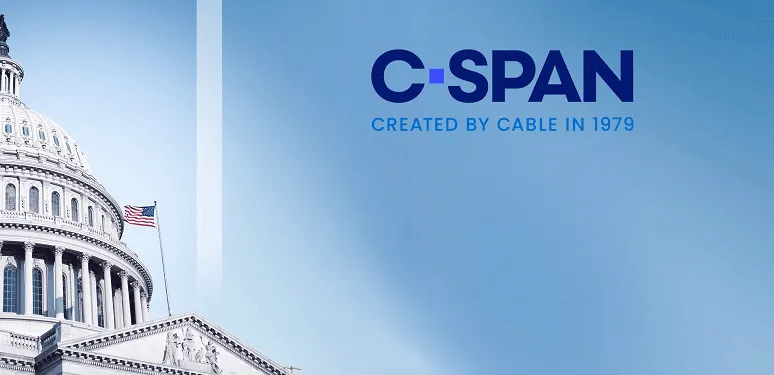For over 40 years, C-SPAN has brought the halls of Congress into American living rooms without interruption or commentary. From its launch in 1979 to today, the network has stood out among its peers for the unique way it operates and approaches news coverage. After a year of a global pandemic and a historic election, the network, like so many other teams, are looking to the future through a new lens.
When the COVID-19 pandemic hit, C-SPAN crews were already tirelessly covering the election from candidacy announcements to the first primaries at the start of the year. So when social distancing and other public health measures had to be implemented, the network had a big job on their hands. C-SPAN Co-CEO Susan Swain explained how their employees began working remotely for safety, and a skeleton team of about 15 people would come in to staff the headquarters. “We all had to figure out so many things we never thought we’d have to be solving in our business. It was great to be here wearing our masks and being collaborative about how to solve some of these problems that cropped up from the pandemic. And the team also had to find new ways to cope with the financial implications of cord cutting that this long-time stable and secure institution never had to face before,” Swain explained.
C-SPAN was already well suited for the digital age well before the pandemic. The network boasts over 268,000 hours of content available on their website’s video library and has been releasing podcasts along with their linear radio station. But with so many changes to media consumption in the last year, C-SPAN is continuing to expand its digital focus even more through presence on social media and delivering short-form content to digital media platforms.
According to an Ipsos Research survey that the network recently conducted, a growing number of C-SPAN’s audience get their programming on a computer, laptop, tablet, or smartphone. The audience also shifts younger than some might expect, with only 20% being above the age of 55. All those changes led to the development of a forthcoming streaming video app to bring the power of the C-SPAN’s coverage of politics to Americans wherever they are.
Of course, with so much changing, not everything can stay. After 26 years, 1.3 million miles traveled, and over 1.6 million in-person visitors, the network has retired its beloved C-SPAN Bus in order to focus on digital efforts to better reach audiences. The bus played an important role in civic outreach, which NCTA witnessed when it covered C-SPAN’s work along the 2016 presidential primary campaign trail. Fortunately, the network is ensuring this type of outreach continues through digital means—whether it’s through sharing resources virtually with college students or conducting StudentCam, a national video documentary competition for middle and high school students.
And while one chapter might be over, the network continues to succeed at its mission. The Ipsos survey found that the C-SPAN audience identifies as 32% liberal, 37% moderate, and 27% conservative. This is a surprisingly wide array of viewers in a world dominated by increasingly partisan media coverage. Research also shows that C-SPAN viewers are politically active, voice opinions and contact public officials. As Susan Swain put it, “people who watch get involved, and people who get involved watch.”
After 40 years, America’s favorite public-service network is still working hard to keep citizens engaged with their government, because C-SPAN’s mission has always been to help make our democracy even stronger.









